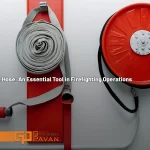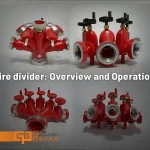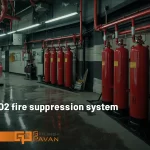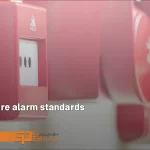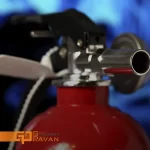To understand the Fire alarm standards first we have to be familiar to the concept of fire safety. Fire safety is one of the most important aspects of building management and facilities. Fire alarm standards are established to ensure this safety. These standards include a set of guidelines and regulations for the design, installation, operation, and maintenance of fire detection and alarm systems in buildings. In this article, we will take an in-depth and comprehensive look at fire alarm standards and discuss key points that can help improve your safety.
How to obtain Fire alarm standards
To ensure that your fire alarm system complies with international and national standards, you can use several methods to obtain valid standards:
Certification Centers: To ensure that you receive valid standards, refer to recognized certification centers such as NFPA, UL, or VdS. These centers can guide you in selecting products that meet the necessary standards.
Online Purchase from Reputable Websites: You can obtain the required standards through official websites such as NFPA or British Standards Institution. These websites offer a complete set of standards.
Consulting Fire Safety Experts: Consulting with engineers and fire safety experts can help you select and obtain the necessary standards for your building or equipment.
How to Maintain a Fire Alarm System: Read here.
International fire alarm standards
NFPA Standards

The NFPA standard, which stands for the American National Fire Protection Association, was established over two centuries ago to protect lives and property and improve the quality of life. By following these standards, fire and fire-related damages can be reduced, and even eliminated. The NFPA standard covers all principles and regulations and is recognized as a reference for various national fire alarm and fire suppression system standards. These standards include:
| Standard Type | Description |
|---|---|
| NFPA1 | Fire Prevention. |
| NFPA2 | Hydrogen Technology Guidelines. |
| NFPA3 | Fire Prevention Testing Standard. |
| NFPA16 | Foam-Water Sprinkler Installation Standard. |
| NFPA72 | Fire Alarm System Guidelines. |
| NFPA92 | Smoke Control System Guidelines. |
NFPA 72 Standard

The NFPA 72 standard, developed by the National Fire Protection Association (NFPA) in the United States, is one of the most important global standards for fire alarm systems. This standard includes guidelines and requirements for the installation, operation, testing, and maintenance of fire alarm systems and emergency communication systems in buildings and other structures. NFPA 72 ensures that fire alarm systems are designed and maintained in such a way that they can reliably alert occupants and emergency personnel to the presence of fire or other emergencies.
| Feature | Description |
|---|---|
| Objective | Ensuring the efficiency of fire alarm systems and quick notification to individuals. |
| Installation | Detailed guidelines for proper system installation. |
| Maintenance | Inspection and maintenance methods to ensure system efficiency. |
BS 5839 Standard

The BS 5839 standard is a British standard that provides recommendations for the design, installation, commissioning, and maintenance of fire alarm systems in residential and non-residential buildings. This standard is divided into three categories: M (manual systems), L (automatic systems for life protection), and P (automatic systems for property protection). BS 5839 is widely used by fire safety professionals, including designers, engineers, and contractors, to ensure that fire alarm systems are properly installed and maintained, ensuring occupant safety.
| Feature | Description |
|---|---|
| Category M | Manual systems. |
| Category L | Automatic systems for life protection. |
| Category P | Automatic systems for property protection. |
EN 54 Standard

The EN 54 standard comprises a set of European standards that define product specifications and application guidelines for fire detection and alarm systems. These standards outline product characteristics, test methods, and performance criteria by which the effectiveness and reliability of each component of fire detection and alarm systems can be evaluated.
| Feature | Description |
|---|---|
| Control Equipment | Control panels and system status display. |
| Warning Devices | Visual and audible fire alarm devices. |
| Detectors | Manual and automatic points for detecting smoke, heat, and fire gases. |
ISO 7240 Standard

The ISO 7240 standard is a set of international standards developed by the International Organization for Standardization (ISO), focusing on fire detection and alarm systems. These standards define the technical and performance characteristics of fire alarm systems and are recognized worldwide for the design, installation, and maintenance of these systems.
| Feature | Description |
|---|---|
| Technical Characteristics | Defines the technical and performance characteristics of fire alarm systems. |
| Testing Methods | Establishes testing methods to evaluate the efficiency and reliability of fire alarm systems. |
| Global Support | Recognized worldwide as a reference for fire alarm systems. |
Other Standards
UL (Underwriters Laboratories) Standard

The UL 864 standard is an American standard related to fire alarm control units and accessories. This standard ensures that these components meet the necessary safety and performance criteria.
| Feature | Description |
|---|---|
| Type | Fire alarm control units and accessories. |
| Objective | Safety and performance according to required criteria. |
LPCB (Loss Prevention Certification Board) Standard

The LPCB (Loss Prevention Certification Board) defines standards such as LPS 1014 and LPS 1204 for the design, installation, and maintenance of fire alarm systems and related equipment.
| Standard | Application |
|---|---|
| LPS 1014 | Companies that design, install, and maintain fire alarm systems. |
| LPS 1204 | Gas fire suppression systems. |
VdS (Verband der Sachversicherer) Standard

The VdS 2095 standard developed by the German Insurance Association (VdS) includes regulations for the design, installation, and maintenance of fire alarm systems.
| Type | Description |
|---|---|
| Regulations | Design, installation, and maintenance of fire alarm systems. |
DIN 14675 Standard

The DIN 14675 standard, applied in Germany, is dedicated to the design, installation, operation, and maintenance of fire alarm systems, ensuring these systems function correctly.
| Feature | Description |
|---|---|
| Application | Fire alarm systems in Germany. |
| Objective | Correct design, installation, operation, and maintenance. |
Guide to Selecting Products with Valid Fire Alarm Standards
When selecting fire alarm products, it’s essential to consider the following:
- Product Certification: Always use products that are certified by valid standards like NFPA, UL, or EN. These certifications indicate that the product complies with international standards.
- Manufacturer Reputation: Manufacturers with a reputable and long history of producing fire alarm equipment usually offer high-quality products that meet standards.
- Regular Testing and Maintenance: Even after installation, ensure that fire alarm systems are regularly tested and maintained to continue complying with necessary standards.
How to Ensure Compliance with Local Fire Alarm Standards
Local laws may require you to follow specific standards in your buildings. Therefore, it is important to:
- Study and Understand Local Laws: Before selecting fire alarm systems, carefully review local laws to ensure the systems comply with local requirements.
- Consult with Local Authorities: If necessary, consult with local authorities to ensure your systems align with legal requirements.
- Use Valid Global Standards: To comply with local laws, you can use globally recognized standards accepted in many regions.
Conclusion
Fire alarm standards play a vital role in the safety of buildings and facilities. By defining the technical and performance characteristics of fire alarm systems, these standards provide precise guidelines for the design, installation, operation, and maintenance of these systems. Using valid international standards ensures the efficiency and reliability of fire alarm systems, ultimately increasing safety for both life and property. Remember, implementing these standards correctly requires sufficient knowledge and experience, so always consult with experienced professionals to make the best decisions for the safety of your buildings and facilities.


